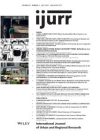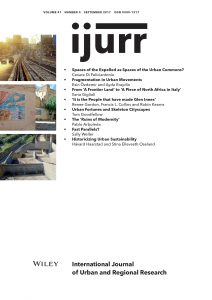Public or state housing has ordinarily been viewed as an impediment to the forces of gentrification, as private property owners or developers are limited in their ability to purchase, renovate or redevelop houses in otherwise desirable areas. As a result, neighbourhoods with significant proportions of state-housing and low-income residents have often been able to establish unique identity and character, sense of place and belonging and strong social support networks. This article examines changes underway in Glen Innes, a central suburb of New Zealand’s largest city, Auckland. Here, established norms around community and urban life are being rapidly and radically reworked through a wave of state-led gentrification. We focus on experiences of displacement, the disruption of long-established community forms, and the reconfiguration of urban life. Our particular contribution is to consider the speed and trauma of gentrification when the state is involved, the slippage between rhetoric and reality on the ground, and the challenges of researchers seeking to trace the impacts of gentrification in the lives of those who have been displaced.
Details
Written by:
Renee Gordon, Francis L. Collins & Robin Kearns
Digital Object Identifier (DOI)
10.1111/1468-2427.12569
About DOI

